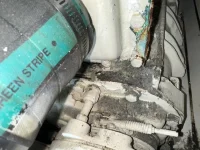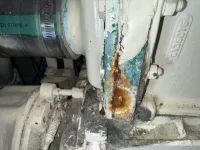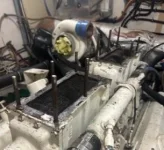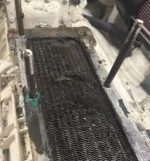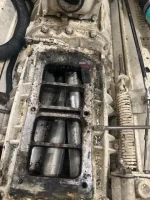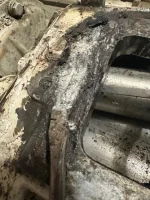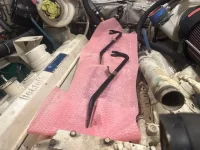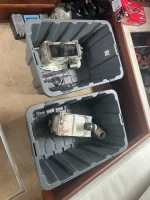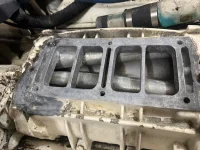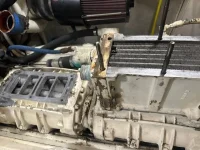scottinsydney
Well-known member
- Joined
- Jul 23, 2014
- Messages
- 899
- Status
- OWNER - I own a Hatteras Yacht
- Hatteras Model
- 61' MOTOR YACHT (1980 - 1985)
Both engines twin intercooler's have vergegris on the gasket ends and also sinister powdery aluminium now resting on the blower below. It seems the rear intercoolers are worse than the front. Its now time to service them. I'll do one engine this year and one next year.
We are going to remove the starboard engine/s intercoolers. I have watched a video https://youtu.be/EKJ9bqQtW5A?si=35jRGk1mRWXNJvAZ
Does anyone have any other helpful hints. I am thinking that along with new gaskets/seals that the faces of each intercooler will need to be machined. New bolts. Hopefully we will not find any other damage or leaking blower seals.
Would anyone have an intercooler parts diagram please?
Comments please. Work is due to start in about 10 days.
Scott.
We are going to remove the starboard engine/s intercoolers. I have watched a video https://youtu.be/EKJ9bqQtW5A?si=35jRGk1mRWXNJvAZ
Does anyone have any other helpful hints. I am thinking that along with new gaskets/seals that the faces of each intercooler will need to be machined. New bolts. Hopefully we will not find any other damage or leaking blower seals.
Would anyone have an intercooler parts diagram please?
Comments please. Work is due to start in about 10 days.
Scott.
Last edited:

